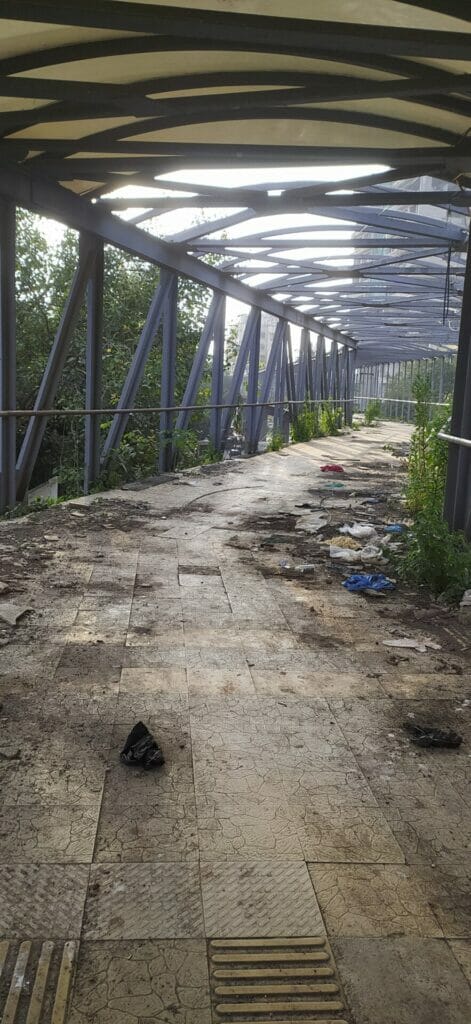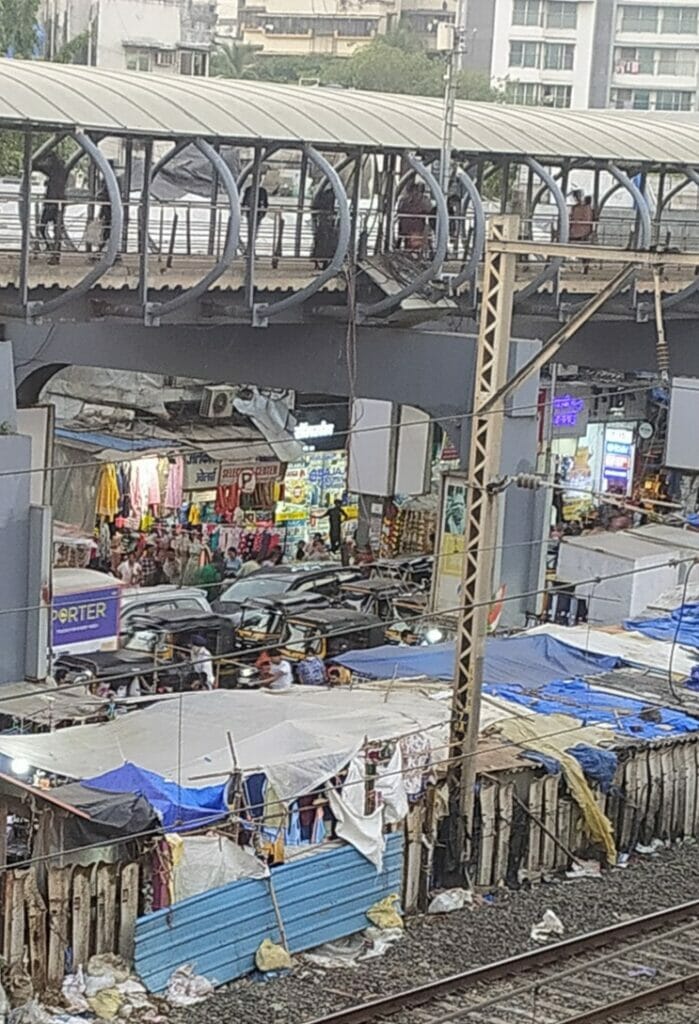This is the second and final part in the series on skywalks in the city. Read the first part here.
Fifteen years after they were commissioned in 2007, the Brihanmumbai Municipal Corporation (BMC) is now attempting to make skywalks more people-friendly in Mumbai, by installing escalators wherever required.
The BMC has now appointed a consultant to study if, where and how escalators could be installed in the 23 skywalks in Mumbai. The most recently inaugurated 24th skywalk at Jogeshwari (E) already has an escalator installed in it. Escalators have already been sanctioned at five skywalks on a pilot project basis.
The Mumbai Metropolitan Regional Development Authority (MMRDA), which commissioned the skywalks in 2007, has now handed over all 24 skywalks in Mumbai to the BMC.
Barring a few popular skywalks, most of them continue to have low footfall.
Falling footfall
At present no study is being done on the usage. However, official surveys have found that most skywalks have failed to garner a good public response, with the exceptions of the popular ones at Bandra (East and West), Santacruz (W) and Borivali (W). In 2011, the MMRDA commissioned a footfall survey and found an estimated daily footfall of about 12 lakhs commuters.
One of the key concerns among people about the skywalk is the low footfall. “Only those skywalks, which are directly connected to the railway station bridges, are doing well. The skywalks that extend beyond the railway station to link internal roads are not doing well. This could be attributed to the fact that while railways have huge crowds, they tend to disperse or taper as they go farther from the railway station,” says an official from the BMC’s bridges department.
“Skywalks are inaccessible for senior citizens, the disabled and even pregnant women because of their heights (of skywalks). People are expected to climb two-storied heights to connect to walk to stations. Wonder how no one thought about fitting escalators for this long?” asks Herman Dias, a social activist from Mahim, who protested and got the plans for a skywalk at Mahim (W) cancelled by collecting 30,000 signatures from residents.
Why are people avoiding skywalks?
A recent IIT-Mumbai survey found that concerns like lack of cleanliness and maintenance (63%), lack of accessible entry-exit points (59%) and hawkers (46%) deterred people from using the skywalks. Many felt more secure in a crowded skywalk than against a deserted skywalk.
It found that the provision of escalators would serve as a convincing factor (81.2%), followed by proper lighting and night security (73.2%) to attract people to use skywalks. It also felt that skywalks worked best only on routes already used by people as people were uncomfortable with a detour beyond “150 metres”.
“Miscreants use the Bandra West Skywalk for drinking and drugs especially at night, irking residents. They complain about the nuisance to the local police. Now, with the connecting bridge cut short due to the Metro 2B works, the Bandra (W) skywalk lies abandoned, causing more nuisance, though the police do come for rounds regularly now,” says Sahil Sheikh, who stays near Bandra station.
Santacruz resident Hemant Parihar says that lack of security leads to the presence of drug addicts who tend to soil the premises and this deters people from using this facility. “Skywalks could serve a good purpose if maintained well and provided with adequate security. They do provide relief from hawkers who have taken over our footpaths,” says Parihar.
Citizens also question the basic planning fault. ” Instead of clearing footpaths for us from hawkers, why has the government spent money to build skywalks for us and handed over the entire footpath to them, ” wonders Parihar.

Read more: On BMC’s ‘eligible’ list, why are hawkers in Mumbai still evicted?
How are (were) skywalks planned?
The skywalks were entirely conceived by urban planners with no scope for the public consultation process involved.
Elected representatives like legislator Atul Bhatkhalkar complained that even they had no clue about where skywalks were coming up while referring to the skywalk at Malad (E), which he had opposed.
“If only public deliberations and consultation were done before the skywalks were built, it would have saved so much of public funds spent on some badly designed ones. The decision taken by transport planners does involve data crunching and various surveys and assessments about pedestrian flow. But public inputs and deliberations from daily users and advocacy organisations are equally critical in designing public mobility infrastructure as felt experiences and practical inputs could go a long way in enhancing their utilitarian value,” says Rishi Aggarwal, convenor of the Walking project, an advocacy group that pushes to make walking safe, convenient and joyful.
Aggarwal explains that skywalks were a result of a highly centralised decision-making process. He emphasises that skywalks need to be aligned with holistic transport planning, which gives more importance to surface infrastructure in the form of proper lighting, good roads and proper footpaths.
Janki Pandya, a social researcher, who has written a secondary academic paper on ‘Making Mumbai Pedestrian friendly’ says that though skywalks are highly utilitarian “They are ugly and a planning disaster from the user’s perspective.” She elaborates: “Since our knees aren’t attuned to climbing comfortably, shouldn’t vehicles be made to climb on elevated roads rather than get us to climb, which is against our nature?”
Read more: Political will, citizen action key for Mumbai’s pedestrians
Lopsided priorities
Design faults at such a large scale have raised questions about whether the skywalks were essentially a contractor-driven project rather than a planning-oriented project. At its conceptual stages, the entire skywalks project was funded by the MMRDA, the city’s planning body and executed by various contractors. Currently, the skywalks are being maintained and built with the BMC’s own funds. The maintenance responsibilities like cleanliness, lighting and minor repairs are being handled by the local ward offices.
Despite spending Rs 897 crores on building 24 skywalks in Mumbai, the quality of the skywalks is concerning within less than two decades of them being constructed. Structural audits had flagged concerns about the quality of skywalks recommending repairs for most and even the closure of one of them at Bandra (East).
New role to meet new challenges
All is not lost for the skywalks though. The emergence of the Metro network has also meant a new role for the skywalks. While earlier, skywalks were meant to help people reach the nearest main road from railway premises, now the renewed purpose seems to be to connect Mumbai’s two arterial old and upcoming transport networks – the railways and the metro.
The skywalks, which were conceptualised prior to the Metro project, will now be reworked to connect with the upcoming Metro railway stations to facilitate crowd dispersal.

A few skywalks have been cut-short at Vile Parle, Santacruz and Bandra stations to make way for the upcoming DN Nagar-Mankhurd metro line 2B along the Swami Vivekanand Road. These portions cut-short will subsequently be connected to the upcoming Metro stations on this corridor.
At Borivali (E), a proposed skywalk meant to connect the railway station to the Sanjay Gandhi National Park is now rescheduled to connect with the Metro Line 7 corridor that is partially operational now on this stretch. The emergence of the metro network in Mumbai has created a unique opportunity that the State could utilise to rework pedestrian infrastructure in the city to meet citizens’ needs.